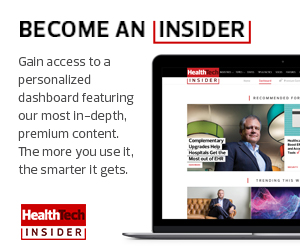1. Assess Your Needs and Pain Points Before Making a Plan
Just as a motorist wouldn’t embark on a coast-to-coast trip without first deciding on a route and securing lodging, healthcare teams must identify key problems and opportunities that are driving the mission. One guiding question, Horvath said, must inform teams during this phase: How do we define value?
Sure, digital transformation requires time and money. But identifying and explaining how the improvements can ultimately cut costs and benefit users may supersede executive-level concerns. Tech teams, he noted, must be ready to “drive that consistency and transparency within IT service management from a service-oriented viewpoint.”
INSIDER EXCLUSIVE: Become a HealthTech Insider to watch the entire Bring IT On webinar.
2. Leverage the Value of Diverse Stakeholders and Experiences
New programs or devices could affect everyone, so form an interdisciplinary team to explore, plan and troubleshoot new ideas before presenting them to executive leadership. “Having that organizational alignment is essential in getting the buy-in we need to be able to drive healthy change,” Horvath said.
The notion, he added, is particularly important as mergers and acquisitions continue to affect the healthcare space. Having diverse stakeholders at the table can ensure digital transformation efforts are executed the same way across newly combined systems and campuses — consistency that drives better user experiences for patients and staff.
#HIMSS20 attendees #poll: What is the top goal of your digital #innovation efforts in 2020? #healthcare #HealthIT
— HealthTech Magazine (@HealthTechMag) February 10, 2020
3. Balance Your Objectives for Greater Stability
An effective digital transformation roadmap, Horvath noted, places equal weight on three elements: people, process and technology. That means identifying the individuals who deliver and receive services; addressing security and usability; and evaluating forward-thinking tools to improve care delivery and stay competitive.
A three-pronged approach, he said, can benefit initiatives of any size — whether it’s a systemwide cloud migration or a BYOD policy for select staff. Even something as seemingly simple as improving the onboarding process for a new employee or device deployment can have big implications for efficiency and HIPAA compliance.
READ MORE: Get more tips to plan for long-term technology initiatives.
4. Roadblocks Are Inevitable — Pace Yourself and Be Flexible
Horvath, a Chicago-area resident, offered a personal analogy: “We have two seasons here: winter and ‘under construction.’” In other words, the headaches of highway work can mirror efforts in the IT space when transitioning from legacy systems or managing sovereign teams, siloed solutions and segmented data. Change takes time.
That’s why it’s important to focus on little victories and their role in achieving a larger end goal. This stairstep approach, Horvath said, is critical to charting effective progress and boosting team morale: “It’s really about small wins — not a ‘big bang’ approach. Little changes can turn into monumental change. It’s about the journey.”
Keep this page bookmarked for our ongoing virtual coverage of HIMSS20. Follow us on Twitter at @HealthTechMag and join the conversation using the hashtags #VirtualHIMSS20 and #CDWHIMSS.











